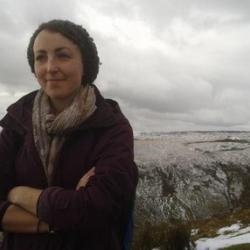Staff profile

| Affiliation |
|---|
| Assistant Professor in the Department of Earth Sciences |
Biography
Biography:
- 2021-present: Assistant Professor in Earth Sciences, Durham University
- 2019-2021: Post-doctoral Research Associate, University of Cambridge
- 2018-2019: Postdoctoral Researcher, GFZ Potsdam
- 2013-2017: PhD in Deep Earth Seismology, University of Cambridge
- 2009-2013: MESci Geophysics with Geology, University of Liverpool

My research interests mainly lie in an observation-driven approach to better understanding deep Earth structure from crustal to mantle scales. My work is driven by trying to answer some of the fundamental open questions about the structure and dynamics of our planet in terms of how the mantle convects and how the crust is formed, deformed and recycled.
General Interests:
- Seismic discontinuities and mineral physics - how imaging and understanding discontinuities can be used to infer temperature and compositional variation
- Seismic Imaging techniques
- Detailed imaging of crustal structure - how it can reflect ongoing and ancient tectonic processes
- Mantle plumes - their role in large scale mantle convection and the potential for thermo-chemical structure
- Subduction zones - how they introduce heterogeneity into the mantle
- Mid-mantle structure - what it suggests about mantle composition
- Core-mantle boundary features - what their role is in mantle convection and how they effect the outer core
- Ambient Seismic Noise - what can the background noise recorded at seismic stations tell us about sources such as ocean storms and human activity?
- Outreach and Diversity - sharing my passion for Earth science and working towards improved diversity in the Geociences
Current Work:
My current focus is on imaging strange and poorly understood features sitting on the core-mantle boundary of the Earth known as ultra-low velocity zones (ULVZs). ULVZs are small in size, 100s by 10s km, but show huge reductions in seismic wave speed compared to the rest of the mantle (10-50%). We currently have very little understanding about what these features are or what effect they have on the large scale convective mantle processes. My current work looks at developing new seismic imaging techniques to better map out the detailed shape and characteristics of ULVZs, with the aim of identifying their underlying cause.
Previous Work:
Much of my previous work focused on the divergent plate margin and plume setting of Iceland. This lead to insights into crustal formation in regions of plume-ridge interaction, an improved understanding of the mineralogy of the mantle transition zone, and observations of exciting new and enigmatic mid-mantle small-scale structures around 1000 km depth. More recent work extended similar methods to other plume settings, mapping out the poorly understood X-discontinuity, to investigate its implications for the thermo-chemical nature of plumes. Other work with collaborators in GFZ Potsdam and the Turkish government's disaster management presidency (AFAD) lead to a new crustal map of the region surrounding Istanbul, and a better understanding of the ancient and current tectonic processes that have shaped that complex region. Ongoing work will extend the use of this dataset to better understand the active subduction going on beneath Turkey.
Departmental Roles:
- Earth Science Equality Diversity and Inclusion (EDI) Group member
- Unlearning Racism in Geoscience (URGE) reading/action group leader (please reach out if you'd like to join - all welcome!)
Research interests
- Global Seismology
- Body wave seismic imaging
- Ambient seismic noise
- Core-mantle boundary structure
- Mantle convection
- Crustal Structure
Esteem Indicators
- 2000:
2018 Keith Runcorn Prize - Royal Astronomical Society PhD Thesis prize
: 2018 Keith Runcorn Prize - Royal Astronomical Society PhD Thesis prize
Publications
Journal Article
- Li, Z., Leng, K., Jenkins, J., & Cottaar, S. (2022). Kilometer-scale structure on the core–mantle boundary near Hawaii. Nature Communications, 13(1), https://doi.org/10.1038/s41467-022-30502-5
- Jenkins, J., Mousavi, S., Li, Z., & Cottaar, S. (2021). A high-resolution map of Hawaiian ULVZ morphology from ScS phases. Earth and Planetary Science Letters, 563, Article 116885. https://doi.org/10.1016/j.epsl.2021.116885

